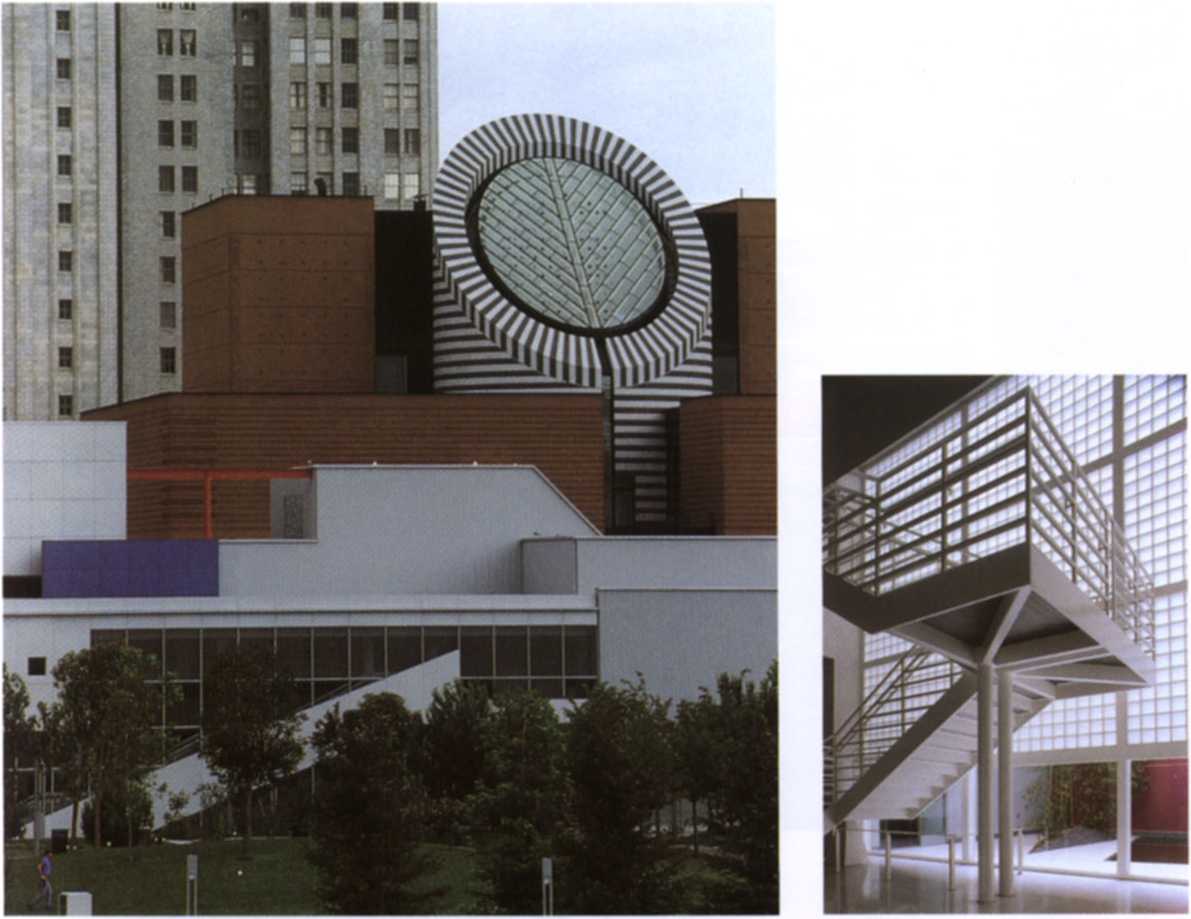New Forms Taschen 129


Fumihiko Maki
Ycrba Buena Center for the Am San Francisco, California, 1991-93 Visible in the foreground of the image to the left above (Botta's SFMoMA structure is in the rear), this is Maki's first building de-signed in the United States in morę than 30 years. Because of the limitations the underground Moscone Center imposed on the site, the Center for the Am is forced literally to float within its dense urban eon tent
Again, with the constraints imposed by recession and other f inancial diff iculties, California is one of the most active areas in the United States for new cultural facil-ities. The most impressive of these by far is Richard Meier's Cetty Center, located on a spectacular wind-swept site midway between the Pacific and downtown Los Angeles. The very f igures give an impression of the size of this project. Its estimated cost is $733 million, with the site preparation alone costing $115 million. The new Getty Center will provide 87,800 mJ of space excluding entrance and parking facilities. The complex will cover 9.7 ha of the 44.5 ha site. An adjoining 243 ha owned by the Getty Trust will preserve the natural quality of the area. In many respects, this is the largest project granted to a single architect in the late twentieth century. And the first impressions of it confirms that it will mark the period in morę ways than one. "In my mind's eye," Richard Meier has said, "I see a classic structure, elegant and timeless, emerging, serene and ideał, from the rough hillside, a kind of Aristotelian structure within the landscape. Sometimes I think that the landscape overtakes it, and sometimes I see the structure as standing out, dominating the landscape; the two are entwined in a dialogue, a perpetual embrace in which building and site are one. In my mind I keep returning to the Romans - to Hadrian's Villa, to Caprarola - for their sequence of spaces, their thick-walled presence, their sense of order, the way in which building and landscape belong to each other."
38 PiAccsor Catherinc
Wyszukiwarka
Podobne podstrony:
New Forms Taschen 091 Fumihiko Maki National Museum of Modern Art Kyoto. Japan, 1983-86 Fumihik
New Forms Taschen 107 Fumihiko Maki Tokyo Metropolitan Gymnasium Tokyo, Japan, 1986-90 Variousl
15833 New Forms Taschen 127 Fumihiko Maki, Kenzo Tange, Vittorio Gregotti and Arthur Erickson in Nov
New Forms Taschen 031 r r Pages34/35 Erie Owen Moss Lawson-Westen House Los Angeles, Calif
New Forms Taschen 096 Ptges 102/103 Franklin Isracl Art Pavilion Beverly Hills, Cali forma. 199
New Forms Taschen 098 Antoine Prodock American Heritage Center Laramie, Wyoming. 1987-93 M
New Forms Taschen 155 Right RoTo Gcmim Learning Center Morristown. New Jersey. 1995 Uscd by the Gemi
New Forms Taschen 188 Pages 190/199 Erie Owen Moss Ince Theater Cutver City, California, 1994 (
New Forms Taschen 207 Pagei218/219 Alvaro Sira Factory for Vitra Weil am Rhein, Germany, 1992-9
więcej podobnych podstron